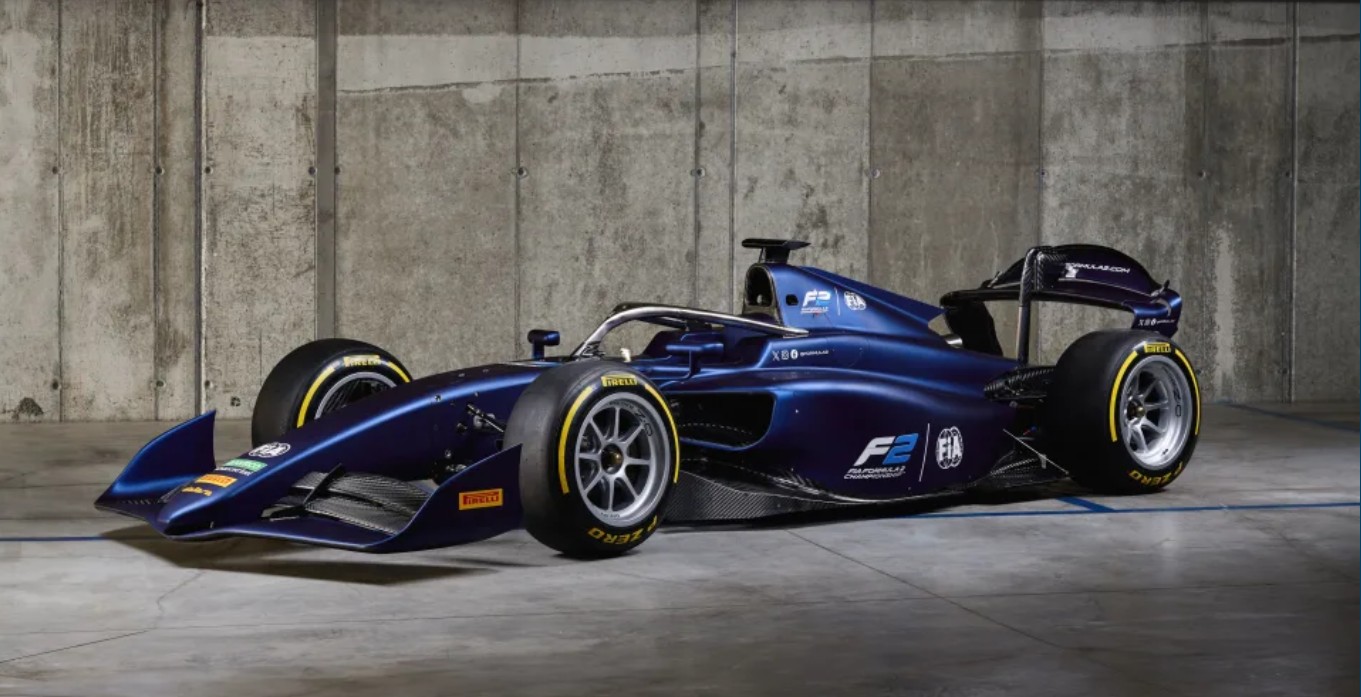F2: FIA reveals next-generation F2 car
The FIA Formula 2 Championship has unveiled their next-generation 2024 car to the international media in Monza Thursday. It will be used for 3 years.
The design philosophy of the next-generation car, which will be raced in the 2024, 2025 and 2026 seasons, is to give young drivers who aspire to race in Formula 1 the best preparation, by making it as close to an F1 car as possible in terms of safety, look, systems, performance, sustainability and accessibility, all at reasonable costs.
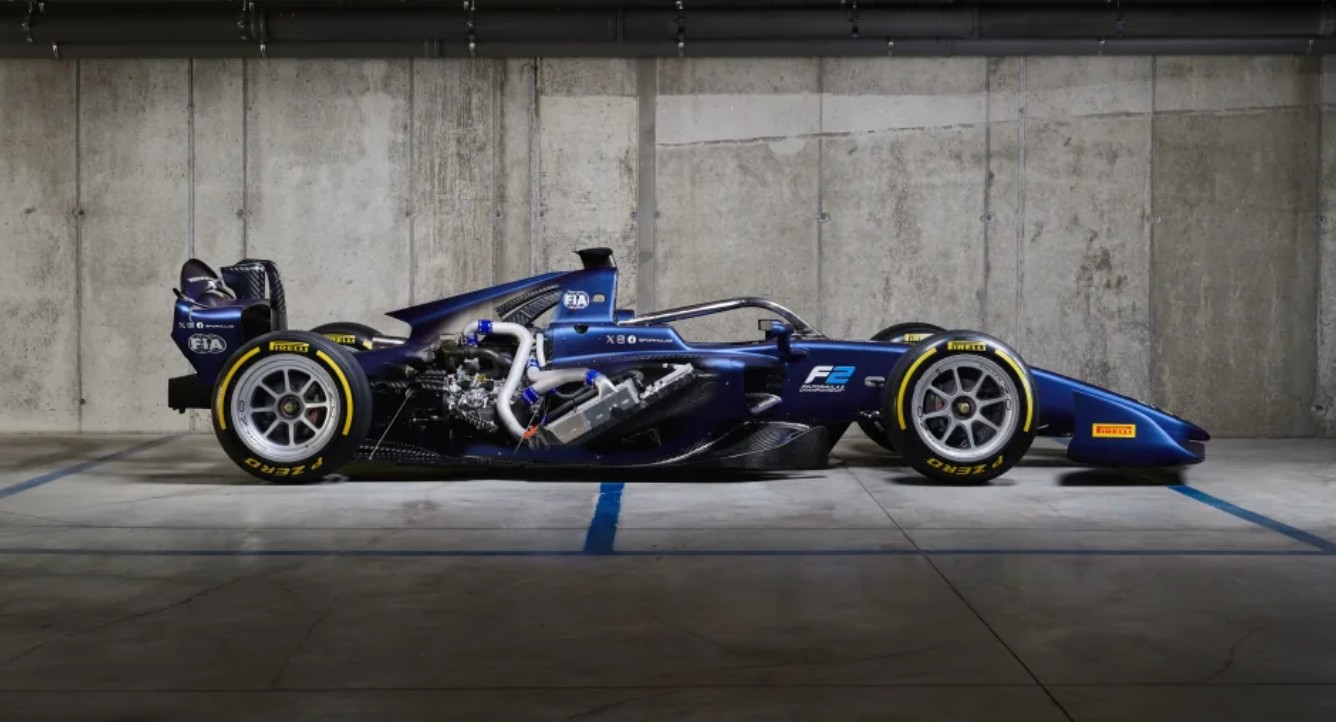
Moreover, the nose, front and rear wings and floor have been designed to encourage wheel-to-wheel racing, which will lead to thrilling on-track action.
The next-generation car, which features the latest FIA safety innovations, is powered by a 3.4 liter turbo-charged Mecachrome engine, and includes some new features to accommodate the Aramco synthetic sustainable fuel that will be introduced in 2025. For 2024, the F2 car will continue to run on Aramco 55% bio-sourced sustainable fuel, which was successfully introduced in 2023.
The F2 2024 has also been designed to comply with the FIA 2024 specifications in terms of braking, steering effort and ergonomics to accommodate a wide range of drivers and make the championship as accessible as possible.
The car systems will still include marshalling such as Virtual Safety Car (VSC), and optimized Drag Reduction System (DRS), whilst the electronics have been enhanced with a new Marelli Vehicle Control Unit (VCU).
The car completed a successful shakedown in July in Varano, with former F2 driver Tatiana Calderon at the wheel. Following today’s unveiling, the development program will continue over a number of tests across the remainder of the year, with several drivers including 2022 FIA Formula 2 Champion Felipe Drugovich.
The program will comprise sufficient mileage to ensure reliability before the cars are delivered to the teams, and further development will be done throughout 2024, 2025 and 2026, as the sustainable component of the fuel increases to reach the target of 100% of synthetic sustainable fuels in 2027.
One car will be delivered to the teams before the end of December 2023, and the second car will be delivered in mid-January 2024. There will be a shakedown with the teams before the first official pre-season test, with one car per team.
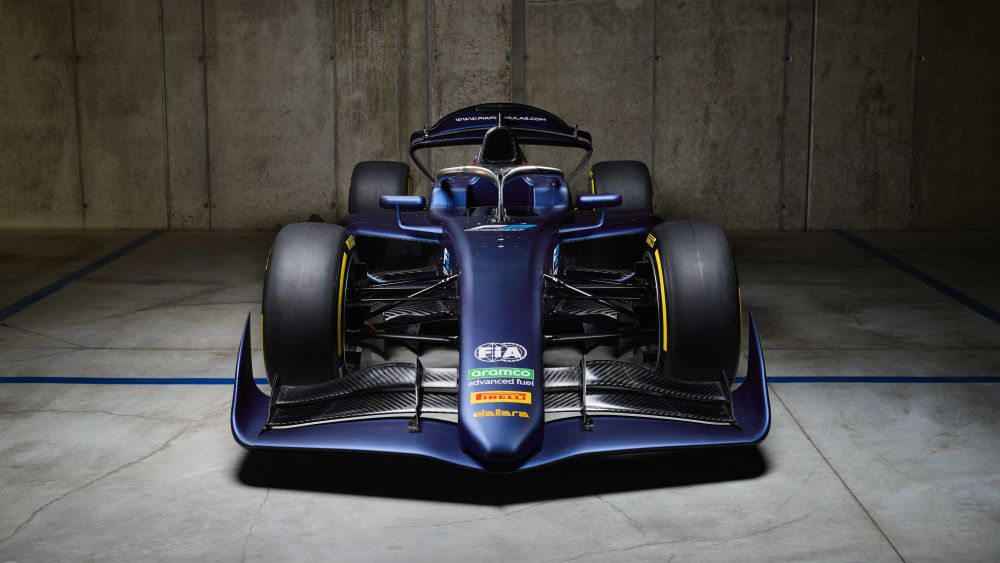
Stefano Domenicali, President and CEO of Formula 1, said: “F2 consistently delivers excellent racing and acts as an important training ground for future members of the Formula 1 grid, and by bringing the design philosophies of the two cars closer together we will support this development further. The new F2 car is also an important symbol for our sustainability journey as the series continues to pioneer advanced sustainable fuel which will become a part of F1 from 2026. I want to pay tribute to Bruno and his team as well as the FIA for our continued strong collaboration in this category. I can’t wait to see the car on track next season.”
FIA Deputy President for Sport, Robert Reid, said: “The launch of this next generation of FIA Formula 2 car marks the start of an exciting new chapter for the championship. A huge amount of work has been done by the FIA, Formula 2 and its partners to put together what is a truly impressive package focused on close racing, the latest safety technologies, even greater environmental sustainability and better accessibility for drivers than ever before. This significant step will bring Formula 2 closer to the pinnacle of motor sport, ensuring that the next generation of drivers get the best possible preparation for the future and also put on a fantastic show for the fans around the world.
“Seeing how design philosophies and technologies are cascading down from Formula 1 to the junior categories is a great testament to the FIA single-seater pathway that guides young talents from around the world towards a successful career in top-flight competition, and we are all looking forward to seeing this car in racing action next season.”
FIA Formula 2 Championship CEO, Bruno Michel, said: “I’m very proud to present our new F2 car, which will race for the next three years. Together with the FIA, we’ve designed a powerful, challenging and safe car that will prepare young drivers for F1, and that will continue to provide great racing and a lot of overtaking opportunities, something that the fans expect from F2.
“It has been designed also to fit all types of drivers, taking into account FIA’s consideration regarding the steering effort. This is obviously key to making our sport more inclusive, by enhancing our car’s driveability and comfort.
“One of our main focuses remains costs control. So, we have kept the same engine and gearbox, and there are a lot of carried-over parts from the previous car. Finally, we made sure that the teams can manage this new car with 12 operational people, as per the Sporting Regulations.
“I want to thank our partners Aramco, Pirelli, Dallara and Mecachrome, who are key in making this car safe, reliable and the best racing machine to prepare our drivers for Formula 1.”
A closer look
The introduction of the latest specification Formula 2 car has caught the eye at Monza. Built to resemble the current generation of Formula 1 car closely, the F2 2024 machine has made advances in safety, performance, aesthetics and internal systems, with the goal of making racing exciting for the F1 community and motorsport fans.
Holding an integral role in the formation, development and realising of the new F2 car, Formula 2 Deputy Technical Director Pierre-Alain Michot explains the original concept of the latest F2 machine and the steps between that turned concept into full racing car.
“We started the project with the FIA in March 2022, working on the new regulations and the specification for the car. We have worked hand-in-hand to define the sporting and technical product we need for the Championship. Together, we decided the end goal and main definition of what we wanted to achieve, and then we collaborated closely with our suppliers on the project and car itself.”
Of course, driver safety is paramount in motorsport and the new F2 2024 car has made a step further in this regard. Featuring the latest safety innovations, the car is up to the very latest FIA safety standards Including the redevelopment of the roll hoop area, strengthening that particular section of car and improving driver protection.
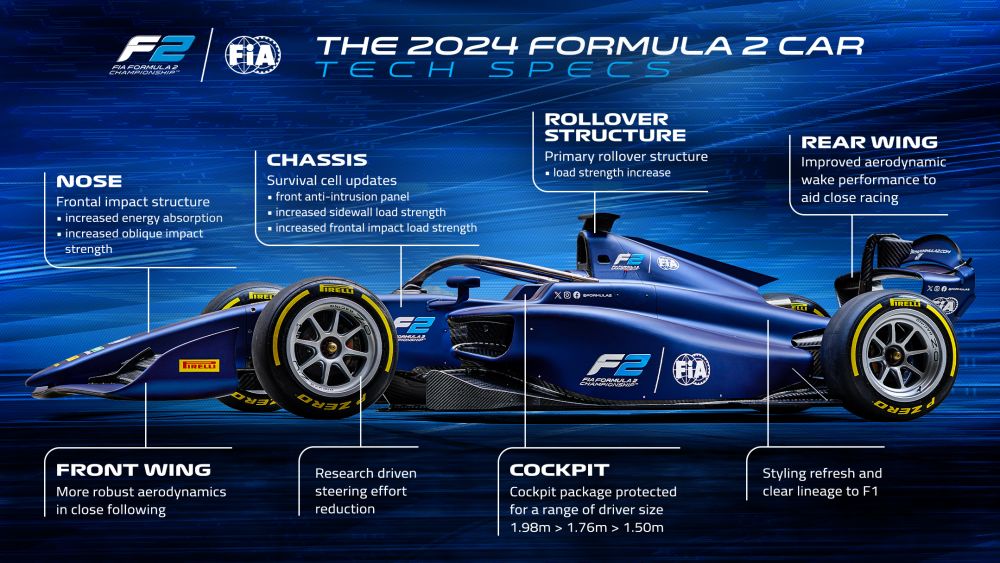
“One of the main things was that because the current car is six years old, safety standards have evolved quite a lot. So, it was challenging for us to make sure the new car had at least the same performance with what we have now and making sure the weight was similar. I think the downforce regulations are a lot closer to the F1 philosophy now. One of the main targets was to ensure our DNA was maintained with the new car, which is to make sure we have close wheel-to-wheel racing and lots of action.
“In terms of safety, there are two aspects, the monocoque has been upgraded quite a lot so it can sustain higher loads. Cockpit safety is a big focus of the new car and the monocoque has been upgraded to the latest FIA safety standards.”
Further changes to the cockpit design along with tweaked suspension geometry means that steering effort meets new FIA 2024 specification.
“In terms of driver ergonomics, we’ve made sure that it can be driven by a driver of any stature, from the shortest to the tallest of drivers and anyone who might be involved in the Championship in the coming years.”
Formula 2 has always been the final step on the way to reaching Formula 1 and the redesigning of bodywork is the latest reflection of that pyramid. While the bodywork has been altered to more closely resemble the latest era of F1 car, there has been plenty of changes under the surface to better prepare drivers for that final graduation in their racing careers.
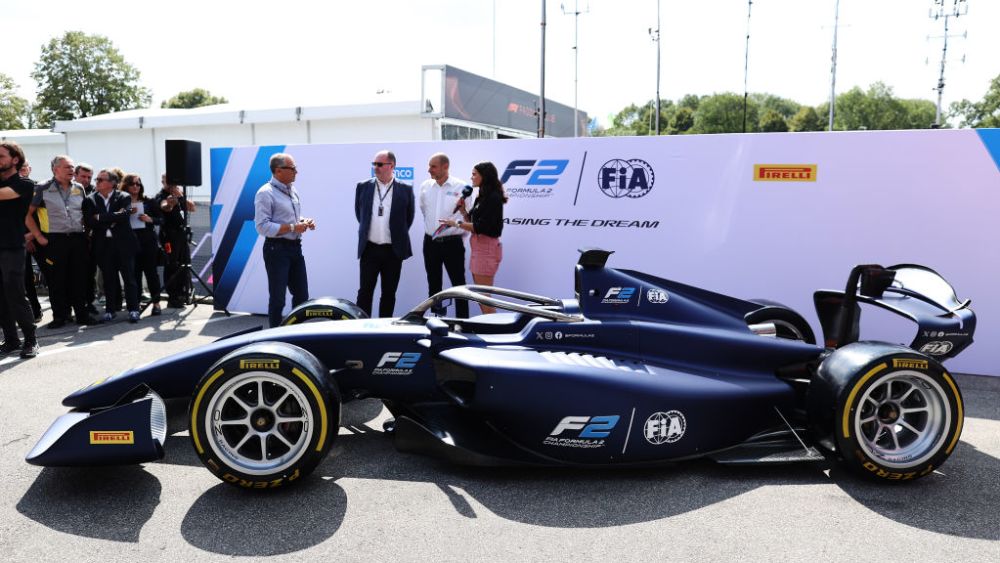
The latest electronic control unit from Marelli means the drivers will have the latest specification systems at their disposal in the car. The systems in place are there to help them acclimatize to having a greater degree of responsibility behind the wheel beyond wheel-to-wheel action. Utilizing all the tools at their fingertips is a hugely valuable skill to carry into the technologically-focused racing world and F1 in particular.
“Everything is new with the electronics systems,” Michot explains. “We have a specific steering wheel that enables drivers to change between different mappings, and they can go through different management systems, adapting their driving style to their needs from the cockpit.”
Sustainability is another key focus in the modern era of racing and that has been no different in the formation and creation of the latest F2 car. Already racing with sustainable fuel in 2023, Michot says the development has also incorporated key aims and targets that will be hit in the future, particularly when it comes to the introduction of synthetic fuel, a huge step for the Championship and motorsport as a whole.
Working closely with Aramco, the 2024 car will continue to use bio-sourced fuel before the switch is made to 55% synthetic fuel for 2025. The longer-term introduction of fully synthetic fuel is a key step for the Championship, and the new car has also been created with this development in mind.
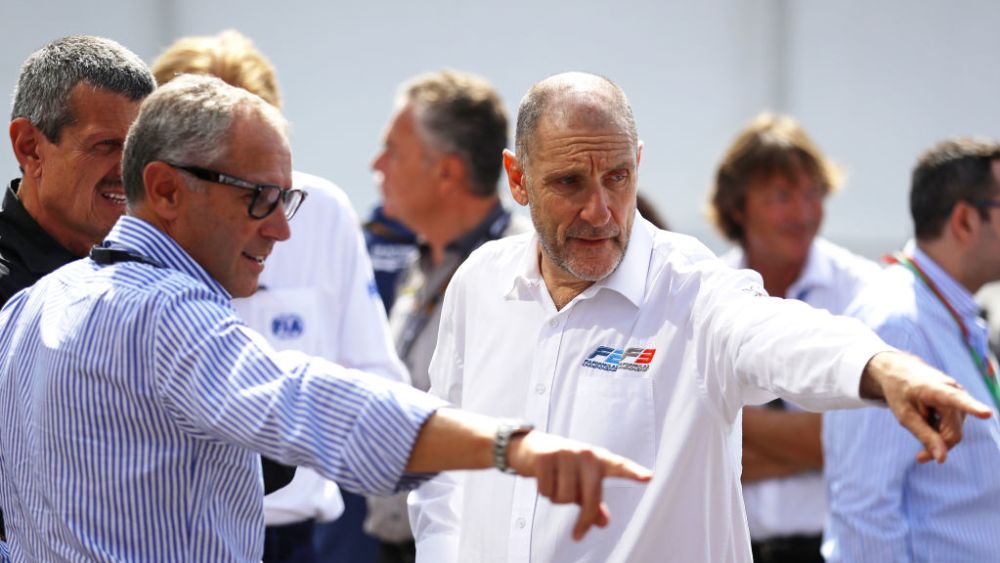
“For 2023, we’re using fuel that’s 55% bio-sourced sustainable fuel and that will be the same for 2024. In 2025, we will switch to 55% synthetic fuel with a view then to graduating onto fully synthetic fuel by 2027. For that reason, the 2024 engine is an evolution of the ’23 engine in anticipation of 2025. We’re working closely with Aramco to make sure that the fuel can be accommodated to the engine, and we have that roadmap with them in place.”
It’s not just fuel though that has been a focus for a sustainability push, with the incorporation of parts made from recycled carbon.
“Seven percent of the bodywork parts manufactured by Dallara will be made from recycled carbon. Generally speaking, we’ve aimed to manufacture all the safety components and bodywork of the car keeping in mind that we had to use less raw material, which is a positive move for sustainability.”
As ever in Formula 2, you can expect plenty of on-track action from the very start of the season right up to the end. The latest car enhances the performance of the drivers and teams, leading to incredible wheel-to-wheel entertainment and a Championship you cannot miss.
The 2024 FIA Formula 2 car – Details
Dimensions
- Overall length: 5284 mm
- Overall width: 1900 mm
- Overall height: 1097 mm (including FOM roll hoop camera)
- Wheelbase: 3135 mm
Engine
- V6 – 3.4 liter single turbocharged Mecachrome engine.
- Rated to 620 HP @ 8750 rpm.
- Fly by wire accelerator system.
- Rebuild after 8000 km.
- Maximum Torque 570 Nm @ 6000 rpm.
Monocoque and Bodywork
- Survival cell – Sandwich Carbon/aluminum honeycomb structure/Zylon anti-intrusion panels made by Dallara.
- Front and rear wing – Carbon structures made by Dallara.
- Bodywork – Carbon – Kevlar honeycomb structures made by Dallara.
Safety standards
- Full FIA F1 2024 safety standards.
- Titanium Halo F1 specification.
Gearbox
- 6-speed longitudinal Hewland sequential gearbox.
- Electro-hydraulic command via paddle shift from steering wheel.
- ZF SACHS Carbon clutch.
- No on-board starter.
- Non-hydraulic ramp differential.
Steering system
- Non-assisted rack and pinion steering system – FIA 2024 specification.
- New XAP steering wheel with dashboard, gear change, clutch and DRS paddles, marshalling & VSC display.
Electronic features
- New Marelli Marvel VCU 480 ECU/GCU including data logging system.
- New Marelli FOX 442 power supply management unit.
- CAN data acquisition pre-equipment.
- Beacon receiver.
- F1 type VSC & Marshalling system.
Suspension
- Double steel wishbones, pushrod operated, twin dampers and torsion bars suspension (Front) and spring suspension (Rear).
- Adjustable ride height, camber and toe.
- Two way (F) / Four way (R) adjustable Koni dampers.
- Adjustable anti-roll bar (Front/Rear).
Wheels and tyres
- O.Z. Racing magnesium rims.
- 18” x 12” front wheel dimension.
- 18” x 13.7” rear wheel dimension.
- F2 specific Pirelli slick / wet tires.
- TPMS Texense (Tyre Pressure Monitoring System).
Brakes
- 6 pistons monobloc Brembo calipers.
- Carbone Industrie carbon-carbon brake discs and pads.
Fuel
- Aramco 55% bio-sourced sustainable fuel for 2024.
- ATL FT5 fuel cell 125 liters – FIA standard.
DRS
- Same functionality of DRS used in Formula 1.
- Hydraulic activation.
Extinguisher system
- New FEV system (electrically operated), in accordance to the latest FIA standards.
